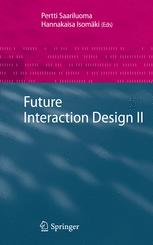

Most ebook files are in PDF format, so you can easily read them using various software such as Foxit Reader or directly on the Google Chrome browser.
Some ebook files are released by publishers in other formats such as .awz, .mobi, .epub, .fb2, etc. You may need to install specific software to read these formats on mobile/PC, such as Calibre.
Please read the tutorial at this link: https://ebookbell.com/faq
We offer FREE conversion to the popular formats you request; however, this may take some time. Therefore, right after payment, please email us, and we will try to provide the service as quickly as possible.
For some exceptional file formats or broken links (if any), please refrain from opening any disputes. Instead, email us first, and we will try to assist within a maximum of 6 hours.
EbookBell Team

4.7
66 reviewsEveryday human-technology interaction is often problematic because the performance capacities that underlie the technologies change frequently, and new ones are introduced. Emerging technologies and services are compelling the interaction community to constantly develop new innovative approaches to solve interaction problems. As a result, interaction design is now in a crucial period in terms of capitalizing on new design possibilities to solve contemporary problems in an efficient manner.
This comprehensive volume follows the success of Future Interaction Design I and complements it by looking at emerging approaches which are likely to contribute to the discipline in the near future. The theme underpinning the book is that it is the human character rather than the technology that should determine the nature of interaction, and that the term ‘interaction design’ covers a range of issues relevant to enabling quality design. A team of international authors discuss a number of new topics, such as psychological design processes, gerotechnology, modeling, e-learning and subconscious experiences.
This novel and broad-ranging volume will be of considerable value to researchers and practitioners seeking innovative perspectives for designing and ensuring effective interaction between humans and technology.